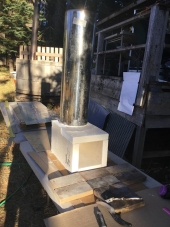Mike Cantrell wrote:It did occur to me to go out back of the store and see if they had a pile of rejects or mistakes. But I don't know if I'd want somebody's name and dates showing in my living room. 
Mike, you made me think. In france, often after thirty years or sixty, they do "lifting of the bones" which means getting the bones out of a grave, to get some room for the new deads. Sometimes, if the familly has moved, or doesn't wich to keep the concession for the land, it is allotted to somebody else. I wonder what they do with the old stones.









